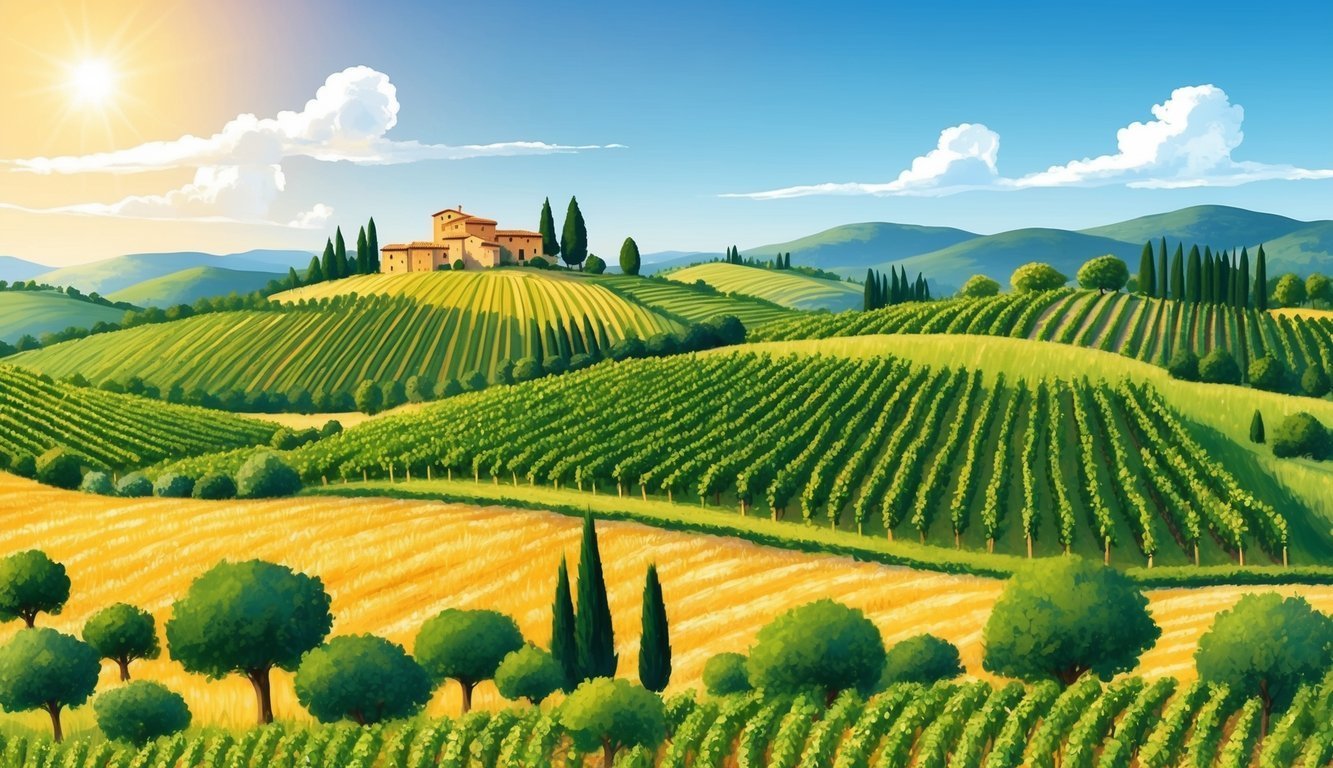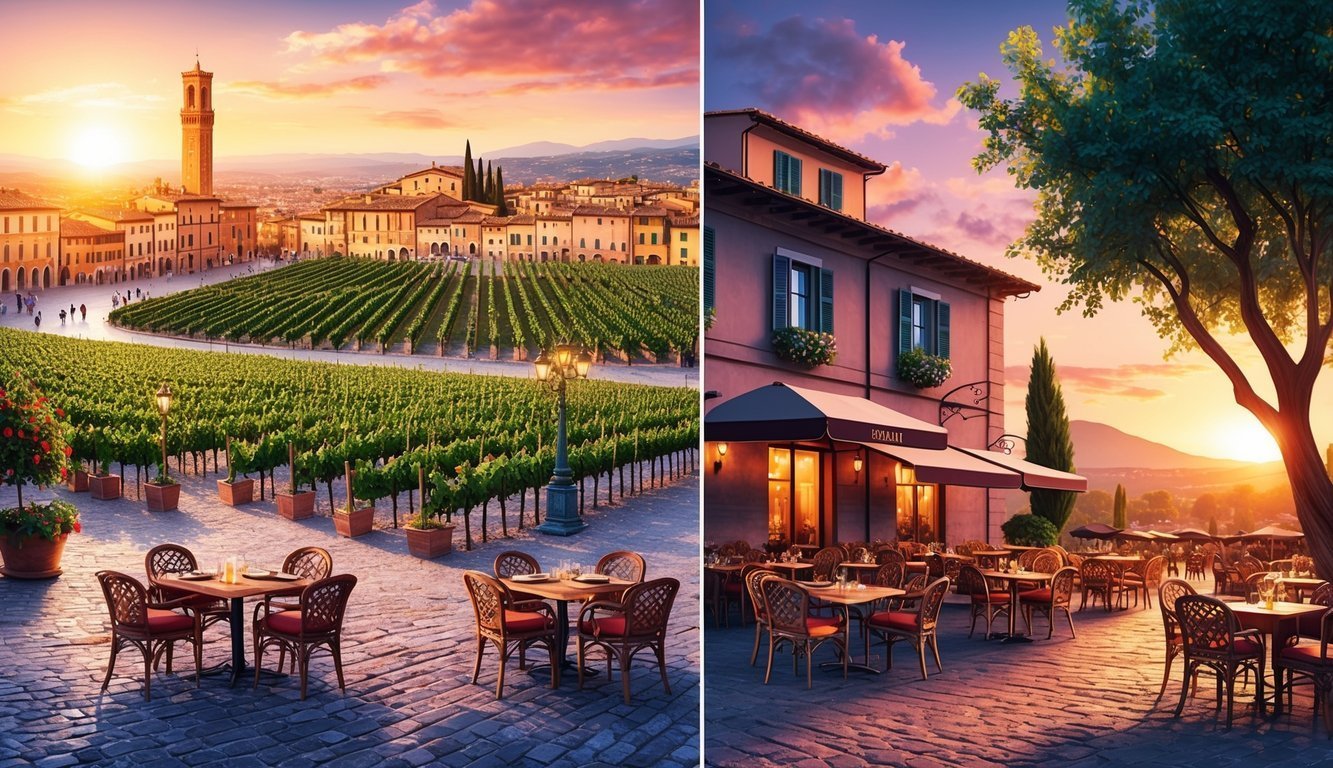When planning a trip to Italy, timing can greatly affect your experience.
Different seasons offer unique attractions and activities that can enhance your adventure. Knowing the best times to visit will help you enjoy Italy’s stunning landscapes, rich culture, and delicious cuisine to the fullest.
In this article, we will explore three popular times to go to Italy.
Each season brings its own charm, making it important to pick the right time for your visit.
Whether you prefer vibrant city life, peaceful countryside, or sunny beaches, the timing of your trip can make all the difference.
Seasonal Highlights
Italy offers unique experiences throughout the year.
Each season brings its own charm with distinct activities, events, and natural beauty that enhance your travel experience.
Spring Blossoms
Spring in Italy, especially from April to June, is a wonderful time to visit.
The weather is mild, making it perfect for exploring.
You’ll see stunning flower blooms across the countryside.
Must-see spots in spring:
- Tuscany: The rolling hills are carpeted with wildflowers.
- Rome: Stroll through the beautiful gardens of Villa Borghese.
- Cinque Terre: Hike the trails with breathtaking views surrounded by vibrant greenery.
Festivals like the Infiorata flower festival celebrate this season.
You can see beautiful flower carpets in towns like Genzano, a true feast for the eyes.
Summer Festivals
Summer, from July to August, is lively with vibrant festivals, ideal for cultural enthusiasts.
The heat can be intense, but the energy of Italy’s summer events is unmatched.
Top summer events:
- Palio di Siena: A historic horse race in July that draws huge crowds.
- Venice Film Festival: In late August, it’s a glamorous event showcasing international films.
- Umbria Jazz Festival: Held in July, enjoy amazing live music in a stunning setting.
Beaches are also a big draw.
The Amalfi Coast and Sardinia have crystal-clear waters.
It’s perfect for sunbathing and water sports, allowing you to relax while absorbing the local culture.
Autumn Harvest
Autumn, from September to October, is harvest time in Italy.
The landscape transforms with rich colors, and the air becomes cooler, a delight for food lovers.
Key highlights include:
- Wine Harvest: Visit Tuscany or Piedmont for grape picking and wine tasting tours.
- Food Festivals: Experience local delicacies during truffle and olive oil festivals throughout the country.
- Culinary Tours: Take cooking classes to learn about local dishes and ingredients.
Autumn is also less crowded, so you can enjoy the sights at a leisurely pace.
Exploring small towns during this season gives you a taste of authentic Italian culture.
Weather Considerations

When planning your trip to Italy, weather plays a big role in your experience.
Each season brings its own charm and challenges, so here’s what to expect.
Mild Spring Temperatures
Spring in Italy, from March to May, offers mild temperatures that make it a lovely time to visit.
Average highs range from 15°C (59°F) in March to about 23°C (73°F) in May.
You can enjoy blooming flowers in cities like Florence and Rome.
However, early spring can be unpredictable, with occasional rain showers.
Packing layers is wise, as mornings and evenings can be chillier.
This season is also less crowded than summer, letting you explore popular sites without the rush.
Sunny Summers
Summer, from June to August, brings warm to hot weather across Italy.
Expect temperatures to soar, often reaching 30°C (86°F) or higher, especially in cities like Rome and Florence.
While the weather is perfect for beach days on the Amalfi Coast, urban areas can feel quite humid.
Most locals take vacations in August, causing many businesses to close, but tourist attractions remain open.
To enjoy your time, stay hydrated and plan outdoor activities for the cooler parts of the day—mornings and evenings.
Cool Autumn Evenings
Autumn, from September to November, is another excellent time to visit Italy.
The weather starts warm in September, averaging around 25°C (77°F), then gradually cools down to about 15°C (59°F) by November.
The fall foliage in regions like Tuscany adds to the beauty of the countryside.
This time also marks the grape harvest, so you can enjoy wine festivals.
Evenings can be cool, so bring a light jacket.
Unlike summer, you’ll encounter fewer tourists, making it easier to enjoy Italy’s charm at a relaxed pace.
Frequently Asked Questions

Planning a trip to Italy can bring up a lot of questions.
Here are answers to some common queries to help you figure out the best times to visit.
What’s the best season for a budget-friendly trip to Italy?
The best time for a budget-friendly trip is during the shoulder seasons, which are from April to June and September to October.
Hotel rates and flight prices tend to be lower, and you can enjoy mild weather without the peak season crowds.
When’s the perfect time to visit Italy if I want to avoid tourist crowds?
To avoid the major tourist crowds, consider traveling in late fall or early spring.
Months like November or March usually have fewer visitors, allowing you to enjoy sights like the Colosseum or the Vatican with less hustle and bustle.
Which months should I consider for the best beach experience in Italy?
For the best beach experience, June to September is ideal.
The weather is warm, perfect for sunbathing and swimming.
Popular destinations like the Amalfi Coast and Sardinia are at their best, bustling with beachgoers and local activity.
Got any tips on the best period to check out Italy and Greece in one trip?
If you want to explore both Italy and Greece, late spring (May) or early fall (September) are great choices.
The weather is pleasant in both countries, and you can enjoy sightseeing without the extreme heat or tourist rush.
When is the ideal time to explore the Amalfi Coast?
The best time to visit the Amalfi Coast is during the spring (April to June) or early fall (September to October).
During these months, the weather is warm, flowers are blooming, and you can experience local festivals without the large summer crowds.
What are the prime months for first-timers to tour the major cities in Italy?
For first-timers wanting to tour cities like Rome, Florence, and Venice, the best months are April to June and September to October.
These periods offer comfortable weather and impressive cultural events.
This makes it easier to explore the city sights.
